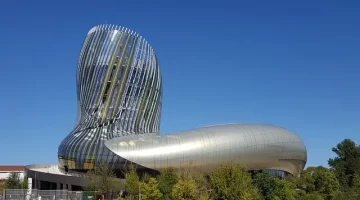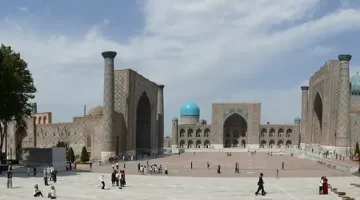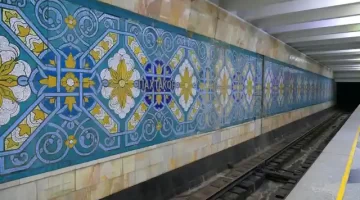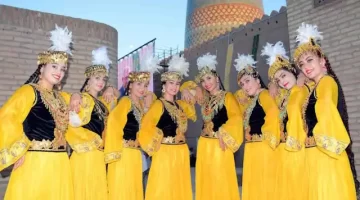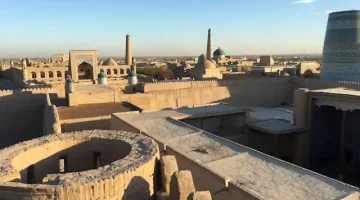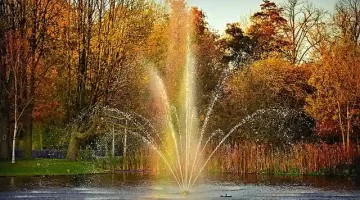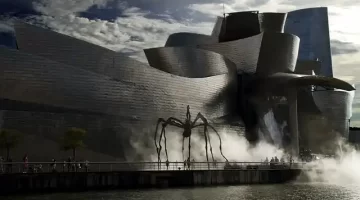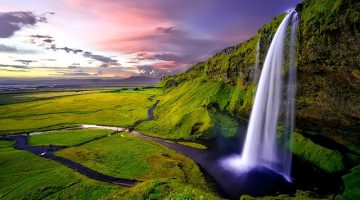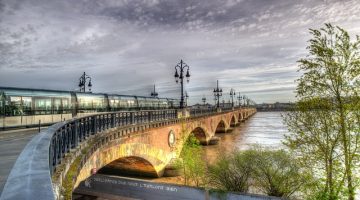Ten Best Things to See in Uzbekistan
The Travel Pages lists the ten best things to see in Uzbekistan, including Registan Square in Samarkand, the historic centre of Bukhara plus Khiva and Tashkent.
Uzbekistan is a country rich in history, culture, and natural beauty. Here are ten of the best things to see in this marvelous Central Asian country.
Ten Best Things to See in Uzbekistan

Registan Square, Samarkand: Registan Square in Samarkand, is an architectural marvel adorned with intricate tilework and majestic domes. Itnked by three grand madrasahs—Ulugh Beg, Tilya-Kori, and Sher-Dor—each boasting stunning Islamic architecture dating back to the 15th and 17th centuries. Registan Square’s beauty lies not only in its architectural splendor but also in its role as a symbol of Samarkand’s rich history, blending Persian, Islamic, and Central Asian influences
Historic Centre of Bukhara: The historic center of Bukhara, is a treasure trove of ancient wonders steeped in Silk Road lore. Its maze-like streets, lined with orns name, meaning “Sandy Place” in Persian, reflects its historical significance as a bustling hub of trade and culture along the Silk Road. The square is flaate mosques, minarets, and madrasahs, have a feeling of timeless charm. The Ark Fortress, dating back over a thousand years, stands testament to Bukhara’s rich history as a center of power and culture. The towering Kalyan Minaret, the beautiful Kalon Mosque, and the intricately-decorated Abdulaziz-Khan Madrasah are just a few of the architectural gems that grace this UNESCO World Heritage Site. Bukhara’s historic center serves as a living testament to the enduring legacy of Central Asia’s cultural crossroads.

Ichan Kala, Khiva: Ichan Kala, nestled within the ancient city of Khiva, is a fascinating open-air museum preserving centuries of Central Asian history and culture. Enclosed within formidable walls, this UNESCO World Heritage Site has a labyrinth of narrow lanes lined with majestic mosques, grand palaces, and wonderful madrasahs. The towering Islam Khodja Minaret dominates the skyline and has panoramic views. Within Ichan Kala’s fortified walls lies the mausoleum of Pahlavon Mahmud, honoring Khiva’s revered poet and philosopher. See our page on the Ten Best Things to See in Khiva.
Shah-i-Zinda, Samarkand: Shah-i-Zinda, meaning “Living King,” is an ancient necropolis in Samarkand, known for its delicate Islamic architecture and spiritual significance. This complex of mausoleums and tombs dates back over a thousand years and is decorated with intricate tilework, colorful mosaics, and imposing domes. Legend has it that the site is the final resting place of Kusam ibn Abbas, a cousin of Prophet Muhammad.
Savitsky Museum, Nukus: The Savitsky Museum in Nukus is a cultural gem housing one of the world’s most extensive collections of Soviet avant-garde art. Founded by Igor Savitsky in the 1960s, it defied Soviet censorship by preserving thousands of artworks deemed unacceptable by the regime. The museum’s diverse collection includes paintings, drawings, and artifacts spanning from the early 20th century to the collapse of the Soviet Union. Notable works by artists like Alexander Volkov and Nikolai Karakhan adorn its halls, offering a unique insight into a lesser-known chapter of art history. The Savitsky Museum is a testament to artistic resilience and human creativity.

Chor Minor, Bukhara: The Chor Minor in Bukhara is an architectural marvel, famous for its unique blend of Islamic and Central Asian design. Translating as “Four Minarets,” it stands as a symbol of cultural fusion and religious diversity. Built in the early 19th century, its four ornate turquoise minarets rise elegantly above a domed structure decorated with intricate tilework and geometric patterns. Originally serving as a madrasah gateway, Chor Minor now charms visitors with its picturesque setting and historical significance, offering a glimpse into Bukhara’s rich heritage and architectural ingenuity. It remains a much-loved emblem of the city’s cultural landscape.
Aydarkul Lake: Aydarkul Lake, in the heart of Uzbekistan’s Kyzylkum Desert, is an oasis of natural beauty and biodiversity. Formed by the waters of the Syr Darya River, it spans over 3,000 square kilometers, offering respite to migratory birds and local wildlife. The lake’s deep blue waters contrast starkly with the surrounding desert landscape, attracting visitors with opportunities for fishing, birdwatching, and camel treks along its sandy shores.
Fergana Valley: The Fergana Valley in eastern Uzbekistan is a fertile expanse of lush landscapes and cultural richness. Bordered by mountain ranges, it boasts a temperate climate ideal for agriculture, yielding bountiful harvests of fruits, vegetables, and cotton. Home to bustling bazaars and ancient cities like Kokand and Margilan, the valley is a hub of trade and traditional craftsmanship. Its vibrant cultural tapestry is woven from the diverse ethnic groups that call it home, including Uzbeks, Tajiks, and Kyrgyz.

Gur-e-Amir Mausoleum, Samarkand: The Gur-e-Amir Mausoleum is a breathtaking example of Islamic architecture. Built in the 14th century, it serves as the final resting place of Timur, the conqueror who built Samarkand as his capital. The mausoleum’s exterior is decorated with intricate tile work, featuring a range of vibrant colors and patterns. The interior is equally impressive, with elaborate carvings and ornate details throughout.
Tashkent Metro Stations: Tashkent’s metro system is not only efficient but also showcases stunning architecture and artwork in its stations, making it a unique way to explore the city’s cultural heritage. See our full page on Tashkent’s Metro Stations.
A Tashkent Metro Station


